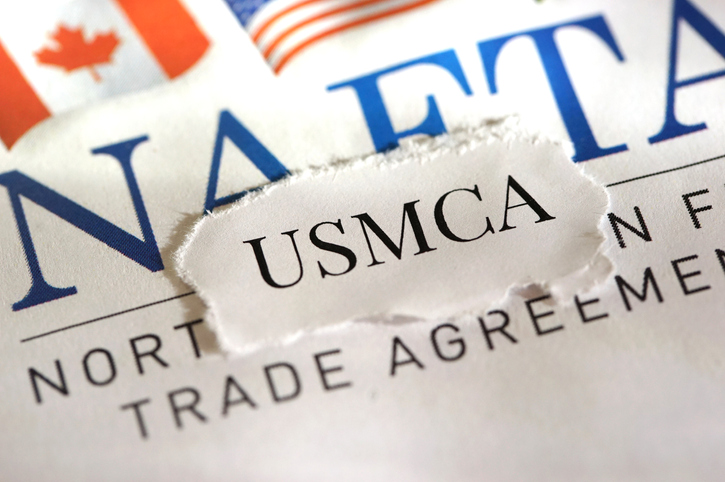Chances are, you are in a business that could benefit from some aspect of nearshoring. My team and I support a broad range of client organizations. We have encountered an endless array of questions about outsourcing opportunities, which has inspired me to write this primer to pass along some of our experience, knowledge, and insights.
Nearshoring refers to relocating business processes, such as manufacturing or service operations, to countries that are geographically close to the company’s home country. The main goal of nearshoring is to benefit from shorter travel times, cultural similarities, and often lower costs compared to offshoring to more distant locations. Nearshoring is especially prevalent in regions with shared borders or proximity, where companies can take advantage of time zone overlap and reduced logistical challenges. There is no hard and fast answer to what industries can benefit most from nearshoring. I will say that it varies depending upon the company’s specific needs, advantages offered by nearby countries coupled with the dynamics of the supply chain, ease of communication, and cultural alignment.

Here are some industries that are known to commonly benefit from nearshoring:
1. Manufacturing: Manufacturing is perhaps the most common industry taking advantage of nearshoring. Manufacturers that require just-in-time production, close collaboration with suppliers, and quick response to market demands are especially well-positioned to benefit from nearshoring. Aerospace, automotive, electronics, apparel, machinery, and consumer goods manufacturing are examples of industries that often choose to nearshore due to the need for timely production and delivery.
Unique to manufacturing nearshoring is the maquiladora concept. Maquiladoras are a type of manufacturing operation where raw materials or semi-finished goods are imported into a foreign country (most often Mexico) for further processing or assembly, and then the finished products are exported back to the originating country. These operations typically leverage lower labor costs and favorable trade agreements to lower costs and increase margins. The origin of the term “maquiladora” comes from the Spanish word “maquila,” which originally referred to the portion of grain that a miller would take as payment for milling. In the context of manufacturing, it refers to the labor-intensive assembly or processing tasks carried out in the foreign country.
Maquiladoras or “maquilas” (for short) commonly associated with Mexico and the United States and the North American Free Trade Agreement (NAFTA) originating in the early 1990s and most recently replaced by the United States-Mexico-Canada Agreement (USMCA).

It’s important to note that nearshoring and maquiladoras are distinctly different. Nearshoring involves relocating various business processes and activities to nearby countries to leverage geographical, cultural, logistical, and sometimes cost advantages. At the same time, the maquiladora’s existence draws benefits from importing materials for processing and manufacturing, utilizing lower-cost labor, and exporting the finished products under the favorable terms provided by trade agreements.
2. Information Technology (IT) and Software Development: IT companies often nearshore software development and technical support to countries with skilled tech talent and similar time zones. This enables real-time collaboration and communication, which is crucial for project success.
3. Customer Service and Call Centers: Customer service operations, including call centers and help desks, can benefit from nearshoring to ensure seamless communication with customers in the same or similar time zones. This enhances customer satisfaction and reduces response times. Our global partners in Asia have experienced strong demand for recruitment support in this sector especially in countries where English fluency is relatively strong such as as the Phillipines, Malaysia and India.
4. Financial Services: Financial institutions, such as banks and insurance companies, can perform nearshore back-office functions like data processing, financial analysis, and compliance tasks. This helps maintain efficiency while ensuring compliance with local regulations. The QualiFind Group has experienced increased demand from employers seeking accounting and finance professionals from Mexico and other parts of Latin America to work remotely in support of key functional requirements. The post-pandemic environment has only cemented the demand for this type of nearshoring that ranges from one-off individual contributors to entire work teams in remote work settings.
5. Pharmaceuticals and Life Sciences: Industries that require strict quality control, regulatory compliance, and timely distribution, like pharmaceuticals and medical devices, can benefit from nearshoring to ensure that products meet local standards and are delivered quickly.
6. Agriculture and Food Processing: Agriculture-related industries may nearshore to take advantage of shared climates and reduce the time between harvest and processing. This can help maintain the freshness and quality of perishable products. The QualiFind Group has supported several agricultural-related nearshore initiatives in Canada, Mexico and Chile in the areas of seed breeding and genetics, vegetable seed production, and post-harvest preservation products.
7. Textiles and Apparel: The fashion industry often nearshores apparel production to maintain agility in responding to changing trends and consumer preferences.
8. Automotive: The automotive industry benefits from nearshoring due to the complex and interconnected supply chain, enabling quicker response to changes in demand and design.
9. Logistics and Distribution: Companies involved in warehousing, distribution, and logistics operations can benefit from nearshoring to optimize transportation and reduce transit times.
10. Language Services: Translation and localization services can be nearshored to ensure accuracy in language and cultural nuances when targeting nearby markets.
So, which countries are best positioned to offer advantages for nearshoring? That depends on a variety of factors, including the specific needs of your business, industry, cost considerations, language requirements, and cultural compatibility.
Much of my experience over the past 20-plus years has been centered on the dynamics between the US, Canada, and Mexico, which colors my experience to a degree. Our global colleagues in search and recruitment have their own examples of nearshoring that are equally relevant and advantageous.
For the benefit of this primer, I’ll provide the following list of countries as a compilation of both my experience and publicly available data that suggests the top countries considered most favorable for nearshoring:
1. Mexico: Proximity to the United States and Canada, along with well-established manufacturing capabilities, make Mexico a popular choice for nearshoring in industries like manufacturing, automotive, electronics, aerospace, agricultural production, agricultural research & development, and software development.
2. Canada: For businesses in North America, Canada offers skilled labor, political stability, and a shared language and culture. It’s particularly attractive for technology and software development.
3. Eastern European Countries: Countries like Poland, Romania, and Ukraine offer a skilled IT workforce and competitive costs, making them ideal for IT outsourcing and software development.
4. Czech Republic: Known for its skilled and well-educated workforce and its central location in Europe, the Czech Republic is a hub for shared services, IT, and software development.
5. Portugal: With its proximity to Western Europe and a growing tech talent pool, Portugal is becoming a destination for IT and software development nearshoring.
6. Brazil: For companies in North America looking to tap into the South American market, Brazil offers a large talent pool and opportunities in industries like IT, finance, and manufacturing.
7. Costa Rica: Known for its stable political environment and highly educated workforce, Costa Rica is a preferred destination for IT, customer service, and back-office operations.
8. Colombia: Boasting a skilled workforce and improving infrastructure, Colombia is gaining popularity for software development, digital marketing, and customer service.
9. Romania: With a strong emphasis on education and a growing tech ecosystem, Romania is attractive for IT and software development nearshoring.
10. Baltic States (Estonia, Latvia, Lithuania): These countries offer skilled tech talent, favorable business environments, and proximity to Western European markets.
11. Hungary: Budapest, in particular, is known for its strong tech talent pool and has become a hub for IT and shared services.
12. Chile: Located in South America, Chile is becoming a destination for IT outsourcing and services due to its political stability and growing technology sector.
If you are considering nearshoring, geography and overall suitability will most likely be your initial criteria for consideration. However, you will also want to evaluate the talent market in the countries under consideration. You must ensure you can access the skills and expertise needed for your specific business. The QualiFind Group and our global colleagues have extensive experience supporting companies with their due diligence to assess suitability against accessible and relevant talent. Here are some of our primary criteria used in assessing a country’s talent market:
Skills Availability and Quality:
• Assess the availability of the specific skills and expertise required for your industry or business functions.
• Look for countries with a strong education system, training programs, and a well-developed talent pool.
• Consider the quality of education and training to ensure that the workforce meets your standards.
Language Proficiency:
• Evaluate the country’s language skills, especially if your operations involve customer interaction or collaboration with teams in the home country.
• Consider whether the country’s workforce is proficient in languages commonly used in your industry, such as English or other relevant languages.

Educational Institutions and Research Centers:
• Research the presence of reputable universities and research institutions that can contribute to a skilled workforce.
• Consider countries with strong educational systems that provide relevant degrees and certifications for your industry.
Workforce Size and Growth:
• Look at the size of the workforce available for the skills you need and how it’s projected to grow over time.
• Consider countries where the talent pool aligns with your short-term and long-term needs.
Cost of Labor:
• Analyze labor costs in relation to the skills and experience of the workforce.
• Compare labor costs across potential nearshoring countries to find a balance between quality and cost-effectiveness.
Cultural Compatibility:
• Assess the cultural compatibility of the workforce with your company’s values and communication style.
• Consider countries where cultural differences won’t hinder effective collaboration and teamwork.
Time Zone Alignment:
• Consider time zone differences and how they might impact communication and coordination between your nearshore and home teams.
• Prioritize countries with time zones that allow for overlapping working hours.
Stability and Business Environment:
• Evaluate the overall political stability and business-friendly environment of the country.
• Look for countries with established legal frameworks, intellectual property protections, and ease of doing business.
Infrastructure and Connectivity:
• Assess the availability and quality of necessary infrastructure, including reliable internet connectivity and modern office spaces.
Regulatory Environment:
• Understand the country’s regulations and labor laws that might affect your business operations, including employment contracts, working hours, and benefits.
Talent Retention and Turnover:
• Investigate the country’s talent retention rates and turnover rates within industries relevant to your business.
• A lower turnover rate can indicate a stable and satisfied workforce.
Government Support and Incentives:
• Research whether the government offers incentives or support for businesses that invest in the country, such as tax incentives or grants for training programs.
Ultimately, the combination of the above criteria should align with your business goals and operational needs. Thorough research and possibly engaging with local experts or consultants can help you decide on the best country for nearshoring based on talent market considerations.
Remember, there are no hard answers to questions about suitability for nearshoring. Determining suitability for nearshoring depends on specific factors such as cost differentials, available “relevant talent,” the regulatory environment, geography, language proficiencies, time zone alignment, and the industry’s specific needs. Companies should carefully analyze these factors before deciding to implement a nearshoring strategy.
– Carlos Acosta

Carlos Acosta is the Practice Leader of The QualiFind Group based in San Diego, California. The QualiFind Group is a Forbes-ranked professional & technical recruitment firm with an established global network of recruiting, consulting and research professionals. The QualiFind Group has supported the talent acquisition needs of a broad range of client organizations undergoing nearshoring initiatives since 1999.
Would you like to learn more about whether your business can benefit from nearshoring?
Contact Carlos Acosta at 619-240-2638 or Warren Carter at 619-921-1795

